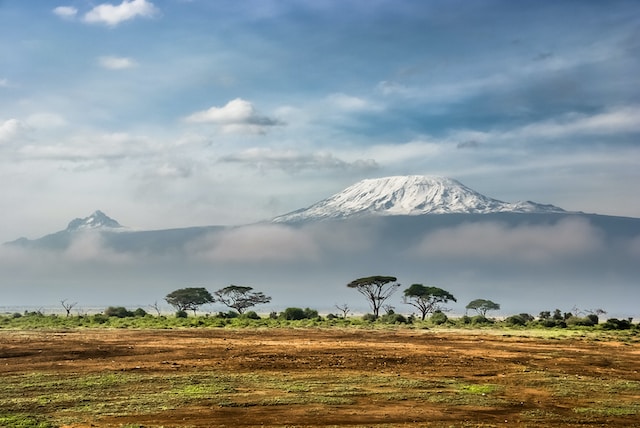A new study on how the palaeoecological and archaeological syntheses covers past years of entangled environmental and human histories of Africa’s mountains that can be used to define the varied social-ecological dynamics and legacies of this biocultural heritage (Marchant et al., 2018). MRI Science Leadership Council member, Robert Marchant, is among the authors of this publication.
Abstract
Mountains are among Africa’s most dramatic landscapes. Comprising 20% of the continental surface area (Nsemgiyumva, 2019; Platts et al., 2011), mountains are vital to the lives of the 1.1 billion people across Africa who depend either directly or indirectly on the many benefits that they provide. For the over 250 million people that live on mountains in Africa (FAO, 2015) this dependency is direct: montane environments are particularly attractive areas due to their high diversity of natural resources and biodiversity (Capitani et al., 2019b), high agricultural productivity, reliable water supply, cooler climate (Ashagre et al., 2018; Cormier-Salem et al., 2018), and supply of fuel. Mountains supply ecosystem services on which the continent relies, not least as all major rivers have headwaters in the highlands. Mountains largely determine Africa’s sustainable development potential by underpinning food production, energy security, biocultural diversity and tourism income, and they supply timber and non-timber forest products (Capitani et al., 2019b; Green et al., 2018; Cuni-Sanchez et al., 2021). Additionally, highland areas will be the focus of afforestation projects, important for current carbon emission targets (see Glasgow Leaders' Declaration on Forests and Land Use 2021). As a result, highlands are the focus of many ecosystem “restoration” initiatives aiming to both sequester carbon and conserve biodiversity, and they are where historical degradation has been acute (Marchant 2021). Whilst recent studies of reforestation potential focus on ecological viability (Bastin et al., 2019; Brancalion et al., 2019), the feasibility of such projects under local and regional socio-economic settings and their impacts on local communities and biodiversity have yet to be adequately assessed. Understanding such socio-economic settings and impacts on communities is important for achieving the laudable aims of the “Bonn Challenge” of “restoring” 350 million ha of forest by 2030, while Africa100 aims to “restore” 100 million ha by 2030. Alongside this, in 2019 the United Nations (UN) launched the “Decade on Ecosystem Restoration” (2021–2030), aiming to massively scale up the restoration of degraded and destroyed ecosystems as a measure for communities to mitigate and adapt to the increasing frequency and magnitude of climate extremes (Platts et al., 2015; Lange et al., 2020; Adler et al., 2021), and to enhance food and water security and biodiversity (UN, 2021).
Large parts of Africa nevertheless faces unique problems, with the highest rate of population growth globally (Molotoks et al., 2021) and the highest poverty gap index ( Molotoks et al., 2021), increasing pressure on both water supplies (Ashagre et al., 2018) and ecosystems (Marchant, 2021). This is combined with rapidly changing climates, transformation of models of socio-economic development, intensification of competing land uses, and often contradicting, ineffective national and international policies working at cross-cutting purposes, all threatening the future sustainability and resilience of mountain social-ecological systems (MtSES) (Archer et al., 2018; IPBES, 2019; Thorn et al., 2021a, 2021b). There is growing evidence that the rate of warming increases with elevation, with mountains experiencing more rapid changes in temperature than lowland regions or the global average (Pepin et al., 2015; Thorn et al., 2020). However, setting appropriate restoration goals requires detailed information on former and current climates, forest extent, ecosystem composition and structure, and the heterogeneity of MtSES landscapes. Without such information we cannot assess the true impact of initiatives such as afforestation on biodiversity or its effect on other ecosystem services.
The disruption of historically predictable seasons, including droughts and floods, has major implications for crop yields and livestock, and hence for the livelihoods of pastoralists, farmers and other small-scale producers (Kariuki et al., 2018, 2021). The recent Intergovernmental Panel on Climate Change (IPCC) 6th Assessment report (AR6) (Adler et al., 2021) illustrated how East African snow and glaciers have significantly decreased in recent decades – with high confidence that this trend will continue over the twenty-first century (Adler, 2021). Consequent decreases in runoff will have downstream impacts, such as for people in the Pangani River Basin (Hejnowicz et al., 2022). Although the challenges lie in the future, we have no opportunity to change the past and its multiple wrongs – from colonial rule and the ensuing division of land and communities and social political systems, through to the industrial removal of key ecosystem engineers such as elephants and importing new crops like maize that have transformed landscapes (Finch et al.,2016). For instance, Tanzania lost 60% of its elephants between 2009 and 2015 (numbers dropped from 109,051 to 43,330), while in Mozambique during the same period the country lost 48% of its elephant population (Down to Earth, 2015).
Keywords
Africa; Sustainable Mountain Development; Sustainability; Environmental; Human History; Biocultural Heritage.
Citation
(2023) The value of researching the past for crafting sustainable African mountain futures, Transactions of the Royal Society of South Africa, DOI: 10.1080/0035919X.2023.2205373
Cover image by Sergey Pesterev.







